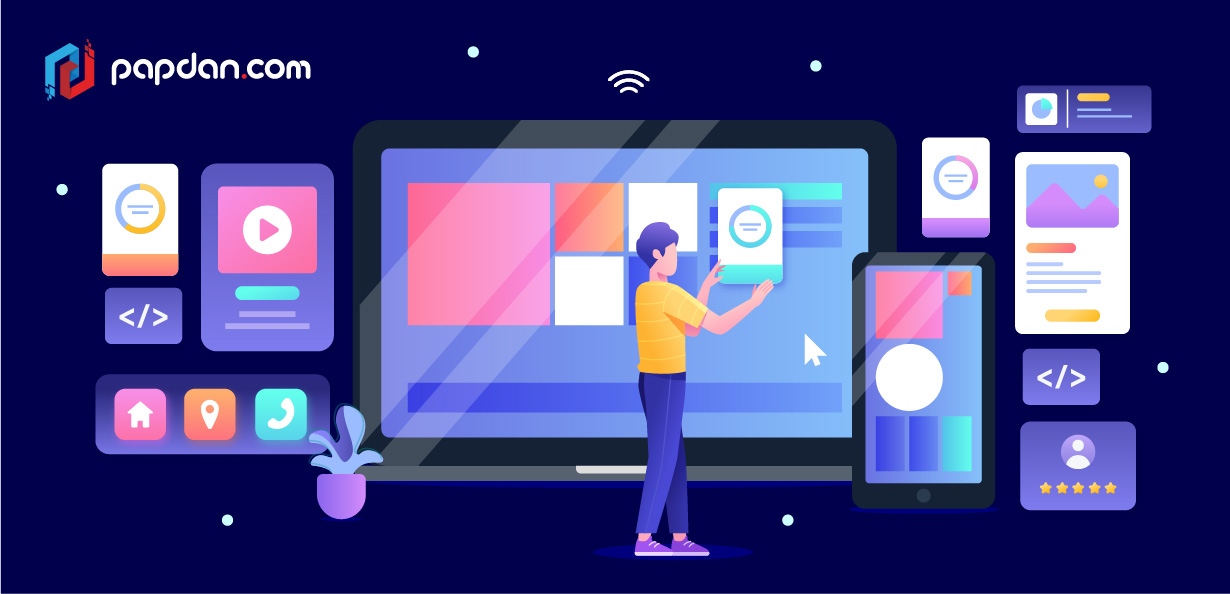Progressive web applications, which allow companies to integrate webpage-like information into an app, have seen a surge in popularity over the years. A progressive web app is a website that has the appearance and functionality of a mobile app. HTML, CSS, and JavaScript are among the web technologies used to create it.
The appeal of progressive applications stems from their ability to load quickly, be accessible offline, and provide improved performance and functionality. To deliver an exceptional user experience, progressive web applications (PWA) may take advantage of device features such as the camera, storage, microphone, and so on.
Apart from advantages above, PWA provides a number of advantages to organizations. Leading firms throughout the world have chosen to establish PWAs because of their unique benefits. Pinterest, Facebook, and Spotify are just a few of the most well-known PWAs.
If you want to create a progressive web app for your company, you need be familiar with the PWA technologies that are required for development. To make your job easier, I’ve included a list of important resources for creating a successful PWA in this post.
Popular Development Tools for Progressive Web Apps
This list of tools is fully subjective to our experience as Melbourne Web Developers and by no means complete. However, the following seven technologies are incredibly popular and useful—indeed, essential—for developing progressive web apps.
React
React is a JS library that was built by Facebook in 2013. It may be used to create both single-page and multi-page web applications.
React is a fantastic choice among the various PWA development technologies available on the market since it is endorsed by Facebook and delivers outstanding reliability.
Furthermore, React JS takes a component-centric approach to development, with components written in JavaScript that can be reused. It will help you save a significant amount of time and money.
Developers may use React to construct progressive web apps that function on a variety of devices, operating systems, and browsers.
PWA Builder
PWA Builder was built by Microsoft to assist in the transition of websites to progressive web applications with minimal effort. The PWA Builder website rapidly determines whether or not a website supports PWA—all you have to do is enter your website’s URL into the PWA Builder.
A bespoke web manifest and many versions of the service workers are also generated by the PWA tool. Furthermore, the tool allows you to quickly test your progressive web app.
The PWA builder is simple to use and has a lot of functionality. It has a WebKit, for example, and lets you to make a backup of your offline copy.
Magento PWA studio
Magento is a prominent PHP-based open-source e-commerce platform. It’s used to make webpages that are mobile-friendly.
Magento PWA Studio is a development toolset for creating high-performing progressive web apps.
If you want to create a PWA shop on top of a Magento responsive website, this toolkit is perfect. It’s built specifically for the Magento 2 platform, with rich libraries and powerful tools that align with the platform’s extensibility philosophy. This means that Magento PWA Studio may be used to transform any Magento 2 version website into a progressive web app.
Furthermore, the Magento PWA studio follows the same release schedule as Magento 2. As a result, whenever the Magento 2 version undergoes a development or architectural update, you will never have to worry about syncing your PWA.
Polymer
Another well-known framework, this one created by Google. It’s one of the greatest tools for creating reusable components and synchronizing data across devices for progressive web apps.
It also comes with a number of templates and comprehensive documentation to aid in the smooth running of your procedure. This framework’s templates render the initial route and give crucial resources for that route.
This open-source solution streamlines the PWA development process and employs the PRPL pattern to ensure that the app is delivered to the device in the best possible way.
Webpack Module Bundler
PWAs must be able to function with a slow internet connection or in disconnected mode, which is one of their requirements. One of the best PWA tools for incorporating offline functionality in a website is this open-source module bundler.
The application was created to create dependency graphs between CSS components, JS files, fonts, and pictures. The goal of these graphs is to make dependency management easier. It will reduce server requests even more and help static components load faster.
Unfortunately, the program lacks sufficient documentation and has a steep learning curve. As a result, it’s only for seasoned programmers.
SuperPWA
You may use this builder to develop PWA on top of your WordPress website. It aids in the simplification of the development process, making progressive web app development easier for new developers.
This basic application is incredibly user-friendly, and it makes it easy to create high-quality offline pages and add offline features to your site.
It has a number of characteristics, including easy configuration, thorough documentation, and quick assistance. This tool may be used by any developer to construct progressive web apps that perform well offline.
PWA Tools Make the Development Process Easier
We looked at some of the greatest PWA tools on the market in this article. From React, which can be used for single-page and multi-page web apps, to SuperPWA for WordPress, this list is sure to have something to meet your needs.
These technologies are used by a number of top enterprises across the world to construct user-friendly and scalable progressive web apps. Why not you, too?

